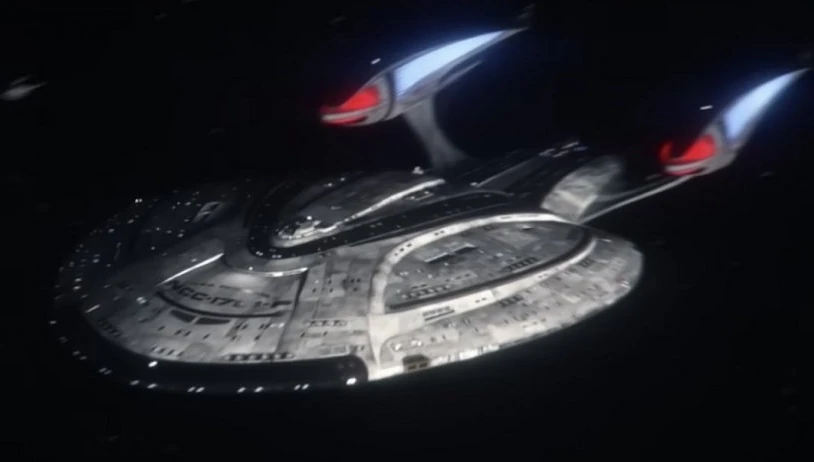The real problem of course, is that the producers have no understanding of Star Trek.
'The Making of Star Trek ', states explicitly that 'galaxy travel is fully perfected...' meaning no exploding consoles, no engineering failures, no this, no that.
That rocks! (or at least the rocks being flung in TNG during console explosion scenes)
Somebody's idea of boring...
Definitely.
There are always unknowns and external elements that can potentially cause damage. The theme's spoken verbiage is par for the course. Alien technology could easily make an impact.
The TOS Enterprise, could, in other words "take" it. This is to be extremely expected after two hundred years of Star Travel.
It withstood the power of 90 photon torpedoes simultaneously hitting it in "The Changeling", for a while anyhow. The "90" number is so ludicrous in terms of trying to awe the audience that the usual volleys in other episodes would mean... zero damage.
No technological failures.
"Contagion" carefully crafts a situation in which the warp core breach can occur, but that becomes a crutch for several stories afterward that don't put as much care into setting up the calamity.
Not to mention that anyone could simply sneeze on a nacelle and moments later the entire ship would explode. The "D" is so big yet when the Bozeman doinks it in "Cause and Effect", the "D" has so much gravitational potential that it just sits there as Bozeman continues to graze and apply pressure against the nacelle, but the whole nacelle glow blinks and explodes (at least the metal doesn't melt) and the rest of the ship explodes a moment later.
No tractor beam on the saucer until Tuesday? Also notice that the scale of the Bozeman, a ship comparable in saucer and nacelle dimensions to the 1701-A, when shown atop 1701-D is completely off (its saucer is almost as large as the "D" and the nacelles appear identical if not slightly longer as well.) Then again, if it were in scale, seeing something that's roughly a third-to-a-half the size of the "D" going "doink!" on the nacelle might not look as compelling, so there's that. I can dig it.
Meaning that in the episode with the flying parasites that it would be extremely rare to get anywhere near a star. This of course raises the question, just how close are they in routine duty, are they expected to a star? If 93,000,000 miles, then there is a major problem. A tenth of an A. U.? That's one hundred times what one experiences at one A. U.
One of many such questions. If the acting is strong enough and the story has other ideas compensating, it's easier to swallow or disregard the life-as-we-know-it issues. We know a lot, but we ain't remotely omnipotent just yet.
Trek was always littered with life forms that could traverse outer space with apparent ease, though even in the late-80s I was amazed they kept the idea going. I suppose it's possible that some being out there is biological in design and actually lives in outer space, feeding on hydrogen, asking what life is about, rubbing up against a passing asteroid named after dog for companionship, and so on, but never once did they show any biological space critter going at warp speed - so they can't exactly travel very far. At least "Tin Man" focuses on Tam Elbrun, Troi and Data, keeping the eponymous creature as secondary so people don't think into it all too quickly. Unlike "Galaxy's Child" and others.
And as laudable as Trek, especially TNG, consulted real space agencies, some dramatic bending was still sometimes done (e.g. "perigee" vs ("apogee"?), from one of the documentaries I'd watched years ago.) Big props for trying and doing as much as they had and could.
We know that there is some protection to the ship, deflector screen based to be exact, but...


 memory-alpha.fandom.com
memory-alpha.fandom.com



